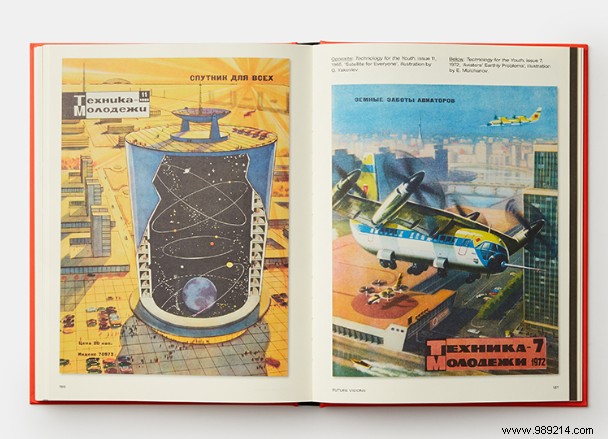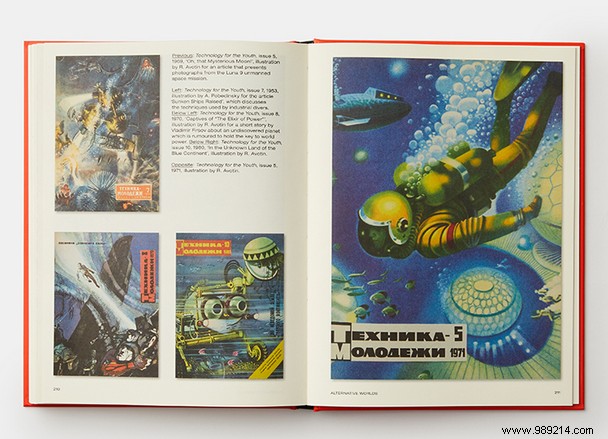For decades, the Russian (or rather Soviet) space conquest has been the subject of futuristic iconography. However, this one was told by a specialized magazine oscillating between science fiction and propaganda. A recently published book has collected the many images from this magazine.
Tekhnika Molodezhi is a popular science magazine appearing monthly since 1933. It originated under the regime of the Soviet Union (USSR) and continues today in Russia of Vladimir Putin. Translating to "Technology for Youth", Tekhnika Molodezhi cradled an entire generation of Soviets through many futuristic illustrations representing the conquest of space. Published in April 2020, a book now traces most of the magazine's history:Soviet Space Graphics:Cosmic Visions from the USSR. However, the most emblematic covers of the magazine perhaps embody the main interest of the book.
The iconography of Tekhnika Molodezhi is varied, but above all very often tinged with science fiction . There were indeed futuristic cities on Earth, in the oceans as well as on Mars, lunar bases on the Moon, spaceships with incredible shapes, giant humanoid robots sheltering their pilot and many others. Much more artistic than scientific, the covers of Tekhnika Molodezhi undeniably fueled a craze for the conquest of space within Soviet society.


Anyway, the magazine itself is more science fiction than science. Tekhnika Molodezhi broadcast a totally fantasized vision of the first hours of the space conquest. It was obviously necessary to celebrate this adventure by giving it a resolutely futuristic side. This way of looking at things is slightly reminiscent of the way NASA recently communicated on space tourism. In 2016, the agency launched a project to create a series of retro images called Visions of the Future, mixing science fiction and art deco.
In contrast, the Tekhnika Molodezhi magazine of the time had a singular peculiarity. Indeed, the latter actively participated in the propaganda of the communist project Soviet. The book Soviet Space Graphics republished an open letter from a cosmonaut that appeared in the magazine in 1962. It thanked the work of Science, which gave the Soviets the possibility of being more powerful for a bright future, but above all communist, which the world would like to adopt.

The author of the book is none other than 'Alexandra Sankova, director of the Moscow Design Museum. The interested party recalled that the successes of the USSR with regard to space were indeed a powerful tool of propaganda . However, artists such as designers have collaborated with this propaganda and have even benefited from technical training for this purpose.